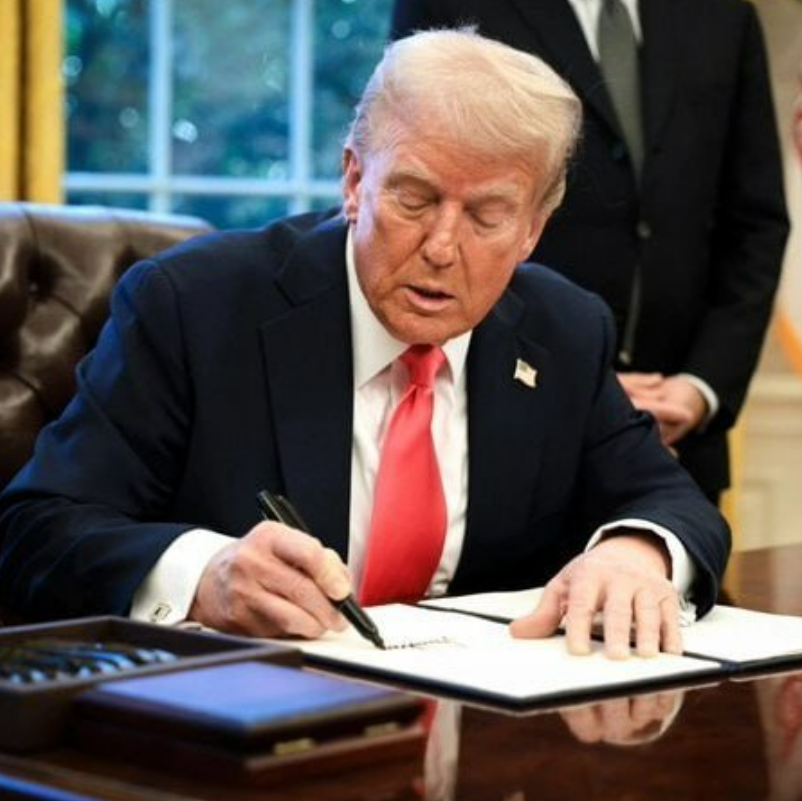Trump Signs Executive Order to Impose Broad Tariffs by August 7
In a bold escalation of his trade agenda, President Donald Trump signed an executive order late Thursday evening imposing new tariffs on dozens of U.S. trading partners, including the European Union and 68 individual nations. The wide-ranging tariffs, set to take effect on August 7, mark a critical phase in Trump’s economic policy and signal a renewed willingness to disrupt long-standing international trade relationships.
The order, signed shortly after 7 p.m., came amid a surge of last-minute negotiations and diplomatic exchanges, as countries scrambled to secure exemptions or modified terms. According to a senior administration official, the delay in implementation is designed to give the White House time to harmonize tariff schedules and finalize bilateral terms.
Tariff Structure Targets Trade Imbalances
The tariffs vary by country but will feature a default 10% rate for all nations not explicitly listed in the executive order. Countries with substantial trade surpluses against the U.S. are reportedly facing steeper penalties. The senior official, speaking on condition of anonymity, emphasized that the tariff rates were determined based on each nation’s trade imbalance with the United States and regional economic factors.
The announcement caps a whirlwind week of trade activity, with Trump locking in several partial agreements just ahead of a self-imposed Friday deadline. The White House reached last-minute arrangements with South Korea, Japan, Indonesia, the Philippines, Cambodia, and Thailand. Trump’s commerce secretary, Howard Lutnick, confirmed the new deals during a television appearance, citing progress in securing regional commitments and even claiming a border conflict ceasefire between Cambodia and Thailand as part of the trade negotiations.
U.S.–Mexico Talks Delay Tariff Hike
Earlier in the day, Trump spoke directly with Mexican President Claudia Sheinbaum, resulting in a temporary reprieve for one of America’s largest trade partners. Mexico secured a 90-day negotiation window, during which existing 25% tariffs on certain goods—down from a threatened 30%—will remain unchanged. Trump has linked these tariffs to issues ranging from auto imports to cross-border drug trafficking, particularly fentanyl.
Sheinbaum called the dialogue “very successful” in a post on social media platform X, adding that the delay offers both sides time to build a long-term trade framework. Trump echoed her sentiment, describing the conversation as productive and suggesting further diplomatic engagement is possible.
Despite the temporary pause, key Mexican exports such as automobiles will still face a 25% duty, and metals like copper, aluminum, and steel will be taxed at a steep 50% during the negotiation period. Trump also claimed Mexico had agreed to eliminate certain “Non Tariff Trade Barriers,” although details on that commitment remain vague.
Mixed Progress with Allies, Uncertainty Remains
Other U.S. allies have received little clarity. Canadian Prime Minister Mark Carney reportedly contacted the White House ahead of planned 35% tariffs on Canadian goods, but Trump confirmed they had not spoken directly on Thursday. Meanwhile, officials in Switzerland and Norway were still awaiting final rate determinations as of Thursday evening.
Trump has leaned heavily on tariff threats throughout his presidency to extract trade concessions. His “Liberation Day” tariffs in April caused a temporary stock market drop and raised recession fears, prompting a 90-day delay in implementation that has now expired. This new executive order replaces that timeline and significantly expands the list of affected nations.
The European Union, after extended discussions, finalized a framework agreement on how its 27-member bloc will be taxed on imported autos and other goods. Trump had signaled progress on the deal earlier in the week while visiting Scotland.
USMCA in Question
Although some goods remain protected under the 2020 United States–Mexico–Canada Agreement (USMCA), which Trump previously hailed as a landmark achievement, the president appears to be distancing himself from the deal. With the agreement up for renegotiation next year, Trump’s tone suggests dissatisfaction, particularly as the U.S. trade deficit with Mexico has ballooned to $171.5 billion in 2024—up from $63.3 billion in 2016.
As the new tariffs loom, economists warn that the costs are likely to be passed onto American businesses and consumers, potentially affecting prices and economic stability. Yet Trump continues to champion the tariffs as leverage to rebalance trade and restore American manufacturing strength, even at the risk of fracturing global alliances.
With the August 7 activation date fast approaching, the world is watching to see whether Trump’s latest tariff gambit triggers further negotiations—or ignites a wider trade war.








